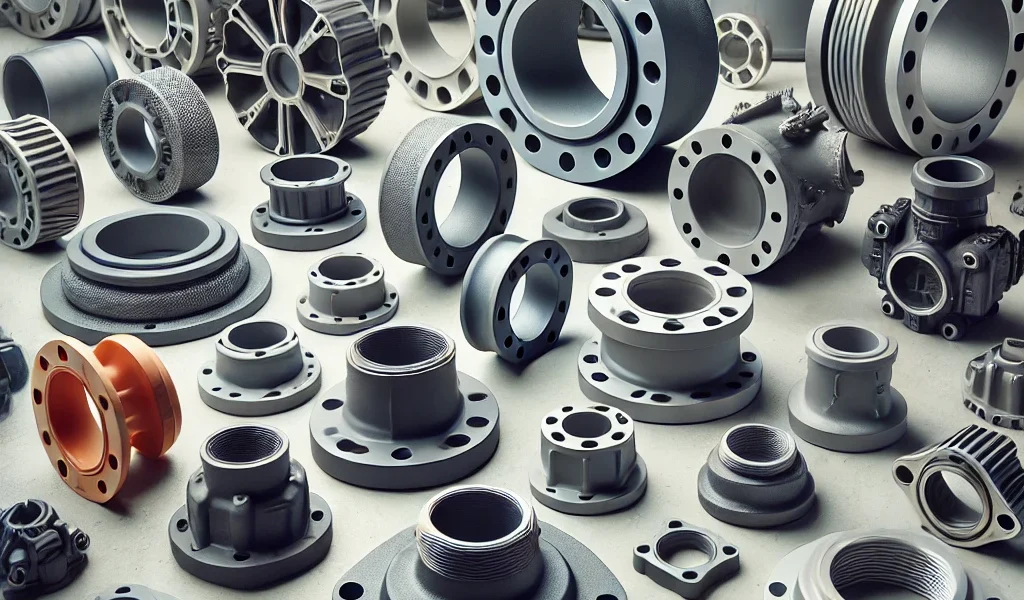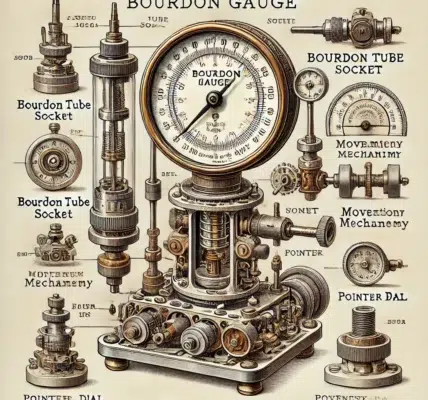Comprehensive Guide to Pipe Flange Protectors: Ensuring Durability in Industrial Applications
In the realm of industrial applications, maintaining the integrity and longevity of components is paramount. One such critical component is the pipe flange, which connects pipes, valves, pumps, and other equipment, forming a complete piping system. To ensure these connections remain secure and undamaged, pipe flange protectors play a crucial role. This article delves into the technical aspects of pipe flange protectors, highlighting their importance, types, materials, and installation methods.
Importance of Pipe Flange Protectors

Pipe flange protectors are essential in safeguarding the flange faces from damage during storage, transportation, and installation. The flange face is a critical sealing surface; any damage or contamination can lead to leaks, reduced efficiency, and costly repairs. By using pipe flange protectors, industries can prevent:
- Corrosion: Protectors prevent moisture and other corrosive substances from coming into contact with the flange surfaces, which can cause rust and degradation over time. This is particularly important in environments exposed to harsh weather conditions or chemical substances.
- Physical Damage: During transportation and handling, flanges are susceptible to scratches, dents, and other forms of physical damage. Protectors shield the flange faces from such impacts, preserving the integrity of the sealing surface.
- Contamination: Dirt, dust, and other contaminants can compromise the sealing surface, leading to inefficient seals and potential leaks. Protectors ensure that the flange faces remain clean and free from contaminants.
- Alignment Issues: Proper alignment of flanges is crucial for effective sealing. Protectors help maintain the alignment of flanges by preventing deformation during storage and transportation.
Types of Pipe Flange Protectors

There are several types of pipe flange protectors, each designed for specific applications and flange types:
- Snap-On Flange Protectors: These are easy to install and remove, providing a secure fit around the flange. They are typically used for standard flange sizes and are made from durable plastic materials. Snap-on protectors are particularly useful for quick, temporary protection during short-term storage and handling.
- Push-In Flange Protectors: Designed to fit inside the flange bore, these protectors offer excellent protection for both the bore and the face of the flange. They are suitable for various flange types and sizes. Push-in protectors provide a snug fit, ensuring they stay in place during transportation and handling.
- Bolt Hole Flange Protectors: These protectors are secured using the bolt holes of the flange, ensuring a tight fit. They are ideal for high-stress environments where the protector needs to stay in place during handling and transportation. Bolt hole protectors are often used in applications where flanges are subject to significant movement or vibration.
- Full-Face Flange Protectors: Covering the entire face of the flange, these protectors provide maximum protection against physical damage and contamination. They are particularly useful for flanges that will be exposed to harsh conditions, such as outdoor environments or areas with high levels of airborne particles.
- Raised Face Flange Protectors: Specifically designed for raised face flanges, these protectors shield the raised portion of the flange, ensuring the sealing surface remains intact. Raised face protectors are essential for applications where the raised face is a critical sealing surface.
Materials Used in Pipe Flange Protectors
The effectiveness of pipe flange protectors depends significantly on the materials used in their construction. Common materials include:
- Plastic: Polyethylene (PE), Polypropylene (PP), and Polyvinyl Chloride (PVC) are widely used due to their durability, resistance to chemicals, and ease of manufacturing. They are lightweight and cost-effective, making them ideal for a wide range of applications. Plastic protectors are available in various grades, from general-purpose to high-performance plastics designed for specific industrial environments.
- Rubber: Rubber protectors offer excellent flexibility and resilience, providing a snug fit and superior protection against impact and vibration. They are suitable for environments where additional cushioning is needed, such as during transportation over rough terrain or in facilities with significant mechanical movement.
- Metal: Metal flange protectors, typically made from stainless steel or aluminum, are used in extreme conditions where high strength and resistance to corrosion are required. They are more expensive and heavier but provide unmatched protection. Metal protectors are often used in chemical processing plants, offshore drilling platforms, and other environments where durability and corrosion resistance are critical.
- Composite Materials: Combining the benefits of plastic and metal, composite protectors offer enhanced durability, chemical resistance, and strength. They are designed for specialized applications where standard materials may not suffice, such as in aerospace or high-tech manufacturing facilities.
Installation and Removal of Pipe Flange Protectors

Proper installation and removal of pipe flange protectors are crucial to ensure they provide the intended protection. Here are the general steps for installation and removal:
Installation
- Clean the Flange Surface: Before installing the protector, ensure the flange surface is clean and free from debris. This prevents contaminants from being trapped between the protector and the flange surface.
- Select the Appropriate Protector: Choose a protector that fits the flange type and size correctly. Using the wrong size can lead to inadequate protection or difficulty in installation.
- Align the Protector: Position the protector so that it covers the flange face and aligns with the bolt holes if applicable. Proper alignment ensures that the protector provides full coverage and effective protection.
- Secure the Protector: Depending on the type, snap, push, or bolt the protector into place. Ensure it fits snugly and covers the entire flange face. For bolt hole protectors, ensure the bolts are properly tightened to prevent the protector from coming loose during handling.
Removal
- Release the Protector: Depending on the type, unsnap, pull, or unbolt the protector. Use the appropriate tools if necessary to avoid damaging the protector or the flange.
- Inspect the Flange: After removal, inspect the flange face for any damage or contamination. Clean as necessary to ensure the sealing surface is ready for installation.
- Store the Protector: If reusable, clean the protector and store it properly for future use. Proper storage helps maintain the condition of the protectors and ensures they are ready for use when needed.
Applications of Pipe Flange Protectors
Pipe flange protectors are used across various industries to maintain the integrity of piping systems. Key applications include:
- Oil and Gas: Protectors are essential in preventing corrosion and physical damage during transportation and storage of flanges used in pipelines and refineries. In offshore drilling, protectors prevent saltwater corrosion and physical damage from rough seas.
- Chemical Processing: In environments where flanges are exposed to harsh chemicals, protectors prevent contamination and chemical damage. Protectors made from high-performance plastics or metals are often used to withstand the aggressive chemicals encountered in these settings.
- Water Treatment: Protectors ensure the longevity of flanges in water treatment facilities by preventing corrosion and physical damage. They are particularly important in facilities that handle a variety of water qualities, including saline or contaminated water.
- Pharmaceutical: In cleanroom environments, protectors prevent contamination of critical sealing surfaces. Sterile environments require the use of protectors made from materials that can be easily cleaned and sanitized.
- Construction: During the transportation and handling of piping systems for construction projects, protectors prevent damage and misalignment. Protectors ensure that piping systems are delivered to the construction site in optimal condition, ready for installation.
Advantages of Using Pipe Flange Protectors
Utilizing pipe flange protectors offers several advantages:
- Cost Savings: By preventing damage and contamination, protectors reduce the need for repairs and replacements, leading to significant cost savings. This is especially important in large-scale industrial projects where the cost of downtime can be substantial.
- Improved Safety: Protectors minimize the risk of leaks and system failures, enhancing overall safety. In industries such as oil and gas, chemical processing, and pharmaceuticals, preventing leaks is critical to maintaining safe and environmentally compliant operations.
- Extended Equipment Life: By maintaining the integrity of flange surfaces, protectors contribute to the extended life of piping systems. This is particularly important in industries where piping systems are subjected to harsh environmental conditions and heavy use.
- Ease of Installation: Most protectors are designed for quick and easy installation, saving time and labor costs. The ease of installation ensures that protectors can be applied consistently and reliably across large numbers of flanges.
- Versatility: Available in various types and materials, protectors can be tailored to meet the specific needs of different industries and applications. This versatility ensures that protectors can be used effectively in a wide range of operating conditions.
Standards and Compliance
When selecting pipe flange protectors, it is essential to ensure they meet relevant industry standards and compliance requirements. Some of the key standards include:
- ASME (American Society of Mechanical Engineers): ASME standards specify the dimensions, materials, and performance requirements for flange protectors used in pressure vessels and piping systems. Compliance with ASME standards ensures that protectors are compatible with a wide range of industrial equipment and applications.
- ISO (International Organization for Standardization): ISO standards provide guidelines for the design and manufacturing of flange protectors to ensure global compatibility and quality. ISO standards are recognized internationally, making them essential for companies operating in multiple countries.
- ASTM (American Society for Testing and Materials): ASTM standards outline the testing methods and material specifications for flange protectors to ensure they meet the required performance criteria. ASTM standards ensure that protectors can withstand the physical and environmental stresses encountered in industrial applications.
Innovations in Pipe Flange Protectors

The field of pipe flange protectors has seen several innovations aimed at improving their effectiveness and ease of use:
- Smart Protectors: Equipped with RFID tags or QR codes, smart protectors allow for easy tracking and identification, enhancing inventory management and ensuring the right protector is used for each flange. Smart protectors can also provide data on the protector’s usage history, helping to optimize maintenance schedules.
- Eco-Friendly Materials: With a growing emphasis on sustainability, manufacturers are developing protectors from biodegradable or recyclable materials to reduce environmental impact. Eco-friendly protectors are designed to provide the same level of protection as traditional materials while minimizing the environmental footprint.
- Enhanced Designs: New designs incorporate features such as integrated gaskets or sealing rings to provide additional protection and ensure a tighter fit. Enhanced designs can improve the protector’s performance in extreme conditions, such as high-pressure environments or areas with significant mechanical stress.
- Custom Solutions: For specialized applications, manufacturers offer custom-designed protectors tailored to specific flange types, sizes, and environmental conditions. Custom solutions ensure that protectors meet the exact requirements of the application, providing optimal protection and performance.
Maintenance and Inspection
Regular maintenance and inspection of pipe flange protectors are essential to ensure they continue to provide effective protection. Key maintenance practices include:
- Routine Inspections: Regularly inspect protectors for signs of wear, damage, or degradation. Replace any damaged protectors immediately. Routine inspections help identify potential issues before they lead to significant problems, ensuring that protectors remain effective.
- Cleaning: Keep protectors clean and free from contaminants. For reusable protectors, clean them thoroughly before reinstallation. Proper cleaning helps maintain the integrity of the protectors and ensures they provide the intended level of protection.
- Storage: Store protectors in a dry, clean environment to prevent damage and contamination. For plastic protectors, avoid exposure to direct sunlight to prevent UV degradation. Proper storage conditions help extend the life of the protectors and ensure they are ready for use when needed.
- Documentation: Maintain records of protector installations, inspections, and replacements to ensure proper tracking and management. Detailed documentation helps optimize the maintenance schedule and ensures that protectors are used effectively.
Pipe flange protectors are indispensable components in ensuring the durability, efficiency, and safety of industrial piping systems. By understanding their importance, types, materials, and installation methods, industries can effectively safeguard their flanges against damage and contamination. Innovations in protector design and materials continue to enhance their performance, providing industries with reliable and cost-effective solutions. Regular maintenance and adherence to standards ensure that protectors deliver optimal protection, contributing to the longevity and reliability of piping systems. Embracing these practices enables industries to maintain high standards of operation, reduce costs, and enhance overall safety.
Through the meticulous selection and use of pipe flange protectors, industries can mitigate risks, prevent costly downtimes, and ensure the seamless functioning of their critical infrastructure. As technology advances, the future holds even more promising developments in the realm of flange protection, paving the way for smarter, more efficient solutions that cater to the evolving needs of industrial applications. With continued innovation and adherence to best practices, pipe flange protectors will remain a cornerstone in the protection and maintenance of industrial piping systems, ensuring their optimal performance for years to come.





